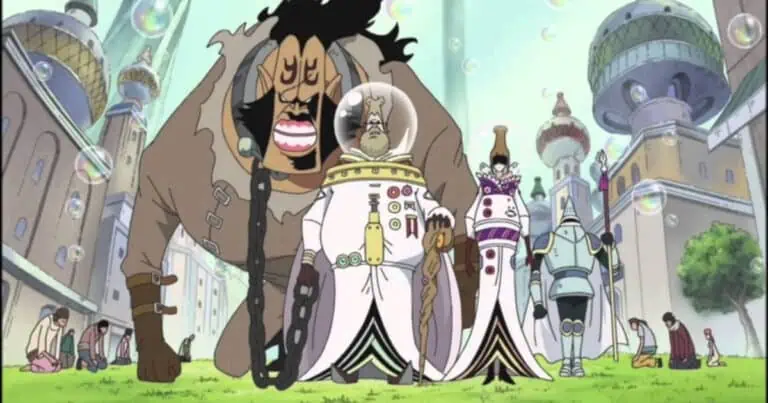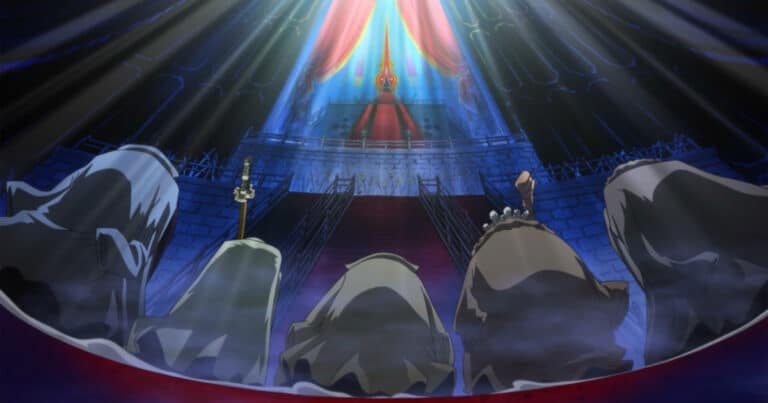The “One Piece” manga has made over $21,000,000,000 in total revenue.
Making Eiichiro Oda one of the world’s best and wealthiest storytellers.
His secret? I call it “Purgatory Storytelling.”
It gives you an otherworldly experience while also being tethered to reality.
Here are 8 strategies that keep people glued to his stories.
1. Rich and Detailed World-Building
The One Piece world is filled with diverse islands, characters, and references from our world.
They’re not just backdrops.
They’re characters, each with its own culture, history, and secrets.
Oda doesn’t just create locations.
He breathes life into them.
From the sun-soaked sands of Alabasta to the chilling, mysterious depths of Enies Lobby, every island tells a story.
Think Water 7 – a city on water, inspired by Venice but with a twist only Oda could think of.

Or Wano Country, a land steeped in Japanese folklore, samurai culture, and a touch of Oda’s wild imagination.

These places aren’t just settings.
They’re reflections of our world’s diversity, complexity, and beauty.
The people too.
His characters are a kaleidoscope of races, species, and personalities.
- Giants
- Fishmen
- Humans
- Minks
Shit there are too many.
The world is peppered with nods to real-world history, myths, folklore, and literature.
From the Moby Dick to the Norse mythology.
He weaves these elements seamlessly like my grandmother on the sewing machine.
He built a world that’s both fantastical and familiar.
It’s a universe where every detail matters.
Every island has a soul, and every character has a place.
How To Use World-Building?
When you create, make your settings as rich and vibrant as the characters themselves.
If you’re posting on social media, don’t just create snapshots—give it a backstory.
Let your audience feel the pulse of the place you’re talking about.
- Use culture and history
- Use descriptive words
- Use analogies
Your content should be a portal, transporting your followers to a worldview you’ve meticulously crafted.
2. Foreshadowing Using Easter Eggs
Oda’s use of foreshadowing is legendary.
It’s unlike the traditional and apparent applications of this tactic.
He often sneakily introduces minor details that later turn out to be major plot points.
Essentially easter eggs.
It creates:
- Suspense
- Unease
- Curiosity
- Mystery
Everything needed to build dramatic tension leading up to a big reveal.
That’s not all.
Usually after every major revelation, community members would dig into past chapters and point these out.
It got people talking, theorycrafting, and admiring.
Many had epiphany moments that made them go “Damn, how did I not see that.”
How To Use Foreshadowing?
Engage your followers by hiding little secrets in your content.
Drop hints about what’s coming or plant seeds for future revelations.
It could be a:
- Pre-sale
- Course launch
- Closed community
- Exclusive newsletter issue
Let your audience play detective, piecing together clues you’ve scattered.
When everything comes to light, they’ll have an “aha” moment.
This will deepen their investment in your content.
3. Thematic Depth
On the surface, it might seem like the story is only about pirates, treasures, and superpowers.
But it’s much more than some nerdy kid’s imagination.
It explores complex themes like:
- Freedom
- Dreams
- Justice
And my favorite…
“Inherited Will.”
It’s about passing on dreams, hopes, and ambitions from one generation to the next.
Keeping the flame of aspiration alive.
The most famous example is the “Will of D.”
These themes are embodied through its characters and their journeys.
Making the story resonate deep within your core.
It has got me questioning my values, ideologies, and notions.
Man…
It still gives me goosebumps to this day.
How To Use Thematic Depth?
Go beyond surface-level topics by weaving meaningful themes into your content.
Whether it’s a YouTube video or writing SEO content, introduce your philosophies in your content.
Addressing profound subjects can create a resonant experience that prompts reflection and conversation among your audience.
That’s not all.
Relate these themes to everyday experiences to make your content more relatable and personal.
That’s how you maintain a balance between theory and practicality.
4. Character Connections and Development
Each character in “One Piece” has a backstory that’s rich and often intertwined with the main narrative.
More than ink on paper.
They’ve got histories, dreams, fears.
They clash. They grow. They surprise us.
It’s like watching real people, not just fictional pirates.
Their transformations?
They’re our transformations too.
It’s like watching an old friend change and mature over the years.
It’s incredibly rewarding.
How To Use Character Connections and Development?
Share your growth and the stories behind what you do.
Every story has a character that’s on a hero’s journey.
For One Piece, that’s Monkey D. Luffy.
And this is yours.
Your audience wants to see your:
- Journey
- Evolution
- Learning curve
This transparency can turn casual viewers into loyal followers who feel they’ve walked alongside you every step of the way.
5. Cliffhangers That Hook
The end of each chapter is always a bombshell.
- A new foe
- A shocking truth
- A sudden twist
You’re left hanging and begging for more.
Often borderline pissed off because of the long wait for the next manga issue.
It’s storytelling with a bone-shattering grip that won’t let go.
How To Use Cliffhangers?
Leave your audience on the edge of their seats at the end of each post or video.
Be it an unresolved question or a sneak peek at your next piece, make them eager to see what you do next.
This works extremely well if it’s a content series.
The end of each segment will be an opened loop and the final piece will close it.
This excitement is how they’ll be back for more.
6. A World That Breathes
“Constant movement” is an understatement.
In One Piece, empires rise, alliances shift, and secrets unveil.
It’s a living, breathing world.
Nothing’s ever static.
Everything’s alive, just like our world.
How To Use A World That Breathes?
Show that your content isn’t static.
You need to:
- Stay current
- Embrace change
- Interact and adapt
- Narrate your shifts
- Show multiple interests
These highlights the idea of the niche of one.
You are a constantly changing individual who can’t possibly be one-dimensional.
Multi-dimensional creators have no competition.
By continuously shaping and reshaping your narrative, you keep your audience engaged and invested in your journey.
This mirrors the ever-changing world we live in.
7. Mirroring Real-World Issues
Oda’s narrative isn’t shy.
It delves deep into issues of the past and present like:
- Racism
- Slavery
- Religion
- Politics
Take the “Fishmen,” for instance.
They’re not just underwater characters.
They represent racial discrimination and the fight for equality.
Their struggles mirror the harsh realities of racism and segregation in our world.
Then, there are the “Celestial Dragons.“
The epitome of unchecked power and privilege.
They own slaves and treat people as lesser beings…

A stark portrayal of the historical horrors of slavery.
Their arrogance and cruelty?
A direct hit at the heart of elitism and inequality.
But the final nail in the coffin?
It’s surfacing the idea of a few elite individuals who run the world.

Or how I like to call them…
“Shadow Rulers.”
It’s bold storytelling that resonates with real-world struggles.
A tale that’s both fantastical and deeply human.
How To Use Mirroring Real-World Issues?
Use your platform to mirror the conversations happening in the world.
Address the issues that stir you, from social justice to environmental concerns.
Or whatever floats your boat and feel strongly about.
When you bring these discussions into your content, you connect with your followers on a level that’s both personal and universal.
Nothing brings people together more than fighting a common enemy.
8. Dualities and Parallels
It’s a world where contrasts and parallels paint a vivid picture.
- Good and evil
- Rich and poor
- Power and weakness
The story explores these dualities in almost EVERY aspect.
It makes the reader think, question, and understand.
Take the dynamic between the Marines and the Pirates.
It’s not as simple as law vs chaos.
It’s a complex dance of morals, ethics, and justice.
Oda shows us that good and evil aren’t black and white.
They’re shades of grey, mixed and muddled in the grand sea of life.
“Good” people aren’t necessarily good.
“Bad” people aren’t necessarily bad.
Just like reality.
How To Use Dualities and Parallels?
Present contrasting ideas and challenge your audience to see both sides.
Explore the grey areas.
Show that the world isn’t just black and white.
Encourage your audience to explore these complexities with you, deepening their understanding and engagement.



